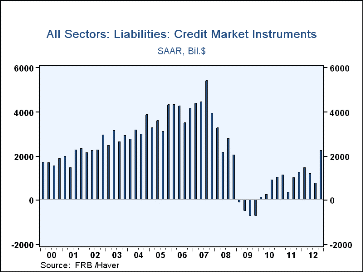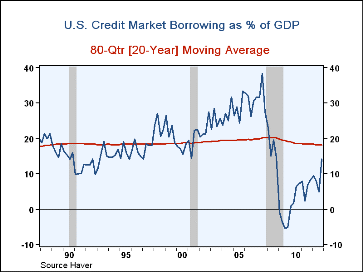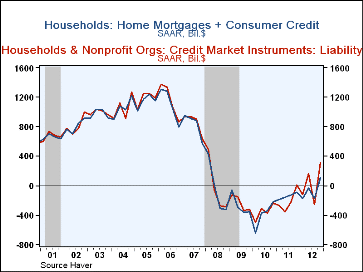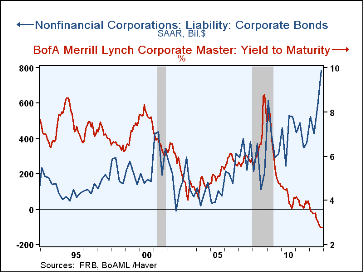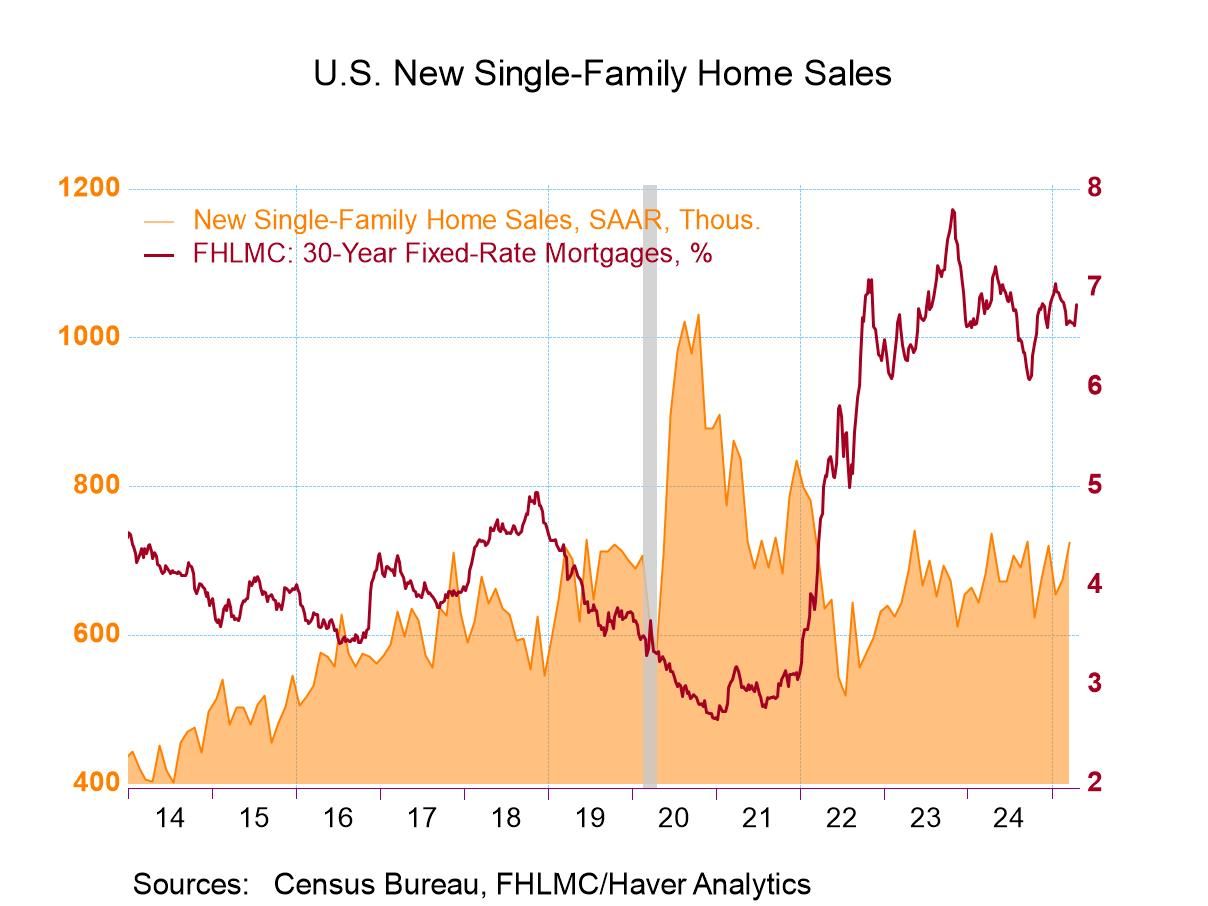 Global| Mar 07 2013
Global| Mar 07 2013U.S. Flow-of-Funds Highlight Q4 Gain in Credit Market Borrowing
Summary
Credit market borrowing picked up in Q4, according to the Federal Reserve's quarterly Flow-of-Funds accounts, reaching a $2,246 billion seasonally adjusted annual rate, close to three times the Q3 pace of $796 billion. All three major [...]
Credit market borrowing picked up in Q4, according to the Federal Reserve's quarterly Flow-of-Funds accounts, reaching a $2,246 billion seasonally adjusted annual rate, close to three times the Q3 pace of $796 billion. All three major nonfinancial sectors, corporate business, households and the federal government borrowed more. Press reports on the release of these accounts headline a gain in household net worth, surely a key to more robust economic growth. But a general gain in credit demand also contributes, and the recent history of the economy-wide data illustrates both the force of the financial crisis and the climb-out that has developed.
Q4's $2.2 trillion in net borrowing is the largest quarter since Q3 2008, just as the crisis was nearing its climax. The latest amount represents 14.2% of GDP, the strongest since Q4 2008. An 80-quarter moving average (that is, 20 years) shows a long-run average of about 18.5%; note that the pre-crisis peak was more than twice that at 38.3% in Q3 2007, and the recession low was a credit liquidation amounting to 5.3% of GDP in Q3 2009.
Households borrowed $312 billion at an annual rate in Q4, in contrast to the net paydown of $255 billion in Q3 and the largest amount of borrowing since Q1 2008. Consumer credit grew at a $182 billion pace, up from $114 billion in Q3 and its largest since Q3 2007. People continued to pay down home mortgages, at a $75 billion rate, but this was the smallest liquidation of mortgage credit since a slim borrowing of $18 billion in Q1 2009. There was a marked increase in "other depository loans" of $219 billion, following a paydown of $50 billion in Q3; this line-item may actually represent Federal Reserve loans to hedge funds, which get tallied in the household sector since it is derived as a residual and there is no separate reporting of hedge fund information. So in judging the credit usage of actual households, we should concentrate on the specific borrowing items, consumer credit and mortgages.
Nonfinancial corporations used a substantial $902 billion in credit in Q4, compared with $533 billion in Q3. The vast majority of the Q4 amount, $782 billion, was in corporate bonds, up from $587 billion in Q3 and the largest amount ever. We wonder if this is a reflection of the very low level of interest rates. Such a development would likely be one of the Fed's policy goals. Accompanying tables show that mutual funds were the largest investors in the bonds in Q4.
Among other sectors, the federal government borrowed at a $1,259 billion pace, up from $690 billion in Q3, and the financial sector paid down at a $510 billion rate, more than they had paid down in Q3, $306 billion. Asset-backed securities issuers, funding corporations and other financing vehicles paid down the largest amounts; conventional commercial banks were still liquidating debt, but this latest quarter saw just a $21 billion annualized amount and an average for 2012 of just $43 billion, in contrast to $292 billion for 2009.
The Flow-of-Funds data are in Haver's FFUNDS database.
*Includes noncorporate business, state & local governments and the rest-of-the-world sector, not shown separately.
Carol Stone, CBE
AuthorMore in Author Profile »Carol Stone, CBE came to Haver Analytics in 2003 following more than 35 years as a financial market economist at major Wall Street financial institutions, most especially Merrill Lynch and Nomura Securities. She has broad experience in analysis and forecasting of flow-of-funds accounts, the federal budget and Federal Reserve operations. At Nomura Securites, among other duties, she developed various indicator forecasting tools and edited a daily global publication produced in London and New York for readers in Tokyo. At Haver Analytics, Carol is a member of the Research Department, aiding database managers with research and documentation efforts, as well as posting commentary on select economic reports. In addition, she conducts Ways-of-the-World, a blog on economic issues for an Episcopal-Church-affiliated website, The Geranium Farm. During her career, Carol served as an officer of the Money Marketeers and the Downtown Economists Club. She has a PhD from NYU's Stern School of Business. She lives in Brooklyn, New York, and has a weekend home on Long Island.


